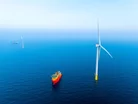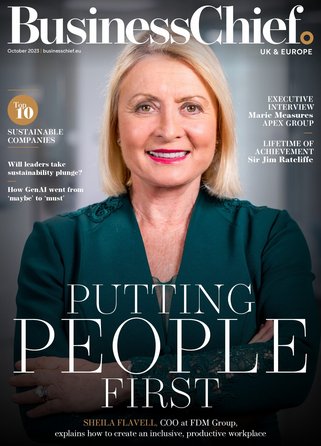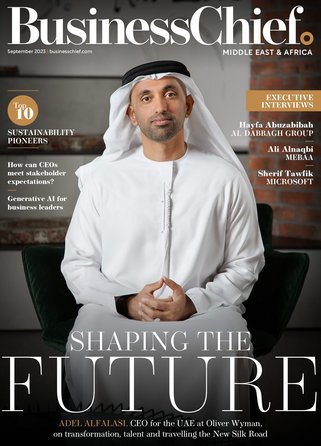How Equinor built the world’s largest offshore wind farm

It’s official: Equinor’s vast offshore wind farm – the largest in the world – is operational.
Located around 80 miles off the UK’s east coast, Dogger Bank Wind Farm is being built in the North Sea in three 1.2 GW phases known as A, B and C.
And, over the past few days, the first turbine at Dogger Bank A started turning and producing electricity, meaning power is now being transmitted to the national grid.
Once complete, the 3.6 GW facility will occupy an area almost as large as Greater London and nearly twice the size of New York City.
Anders Opedal, CEO of Norwegian energy giant Equinor, said: “Set against the broader energy context, Dogger Bank, the world’s largest offshore wind farm, demonstrates the best of what the offshore wind industry can offer, with innovative technologies, long-term jobs and economic growth and security of electricity supply at a major scale.
“First power from Dogger Bank, is a testament to the collaboration between the authorities, the project partners, suppliers and our host communities to realise this project.”
Equinor: A Scandinavian success story
Equinor can trace its origins back to 1972, when the Norwegian government founded the limited company Den Norske Stats Oljeselskap A/S, better known as Statoil.
Statoil later merged with the oil and gas division of Norsk Hydro, before adopting its current name in 2018.
Today, Equinor is the largest supplier of energy to Europe, a world-leading offshore operator, the largest oil and gas operator in Norway, and an international pioneer in renewables and low-carbon solutions. All this is made possible by a team of 22,000 employees based in 30 countries.
The company’s ambition is to set an example when it comes to the renewable energy transition, creating value through opportunity and breaking new industrial ground by harnessing 50 years worth of experience.
In an increasingly unpredictable world, Equinor’s delivery of oil, gas and wind power is providing a vital and stabilising contribution to Europe’s energy security, both in the short and long term.
The business is intent on being a leader in the sustainability space, committing itself to the UN’s sustainable development goals and trying to resolve the world’s energy trilemma of security, affordability and climate change.
Equinor supports the Paris Agreement and has a clear ambition to become a net-zero company by 2050.
Dogger Bank raises the bar for offshore energy
Dogger Bank is being developed and built by a joint venture comprising Equinor, SSE Renewables and Vårgrønn (itself a joint venture of Eni Plenitude and HitecVision).
SSE is the lead operator for the development and construction phase, while Equinor will take the reins during its expected 35-year lifetime, maintaining and operating the site.
Operations and maintenance will be carried out from the recently opened O&M base at the Port of Tyne, which will host around 400 workers.
When complete, Dogger Bank will be more than two-and-a-half times the size of the largest offshore wind farm currently in operation, capable of producing enough energy to power the equivalent of six million British homes annually.
Eventually, power will be provided by 277 turbines, each standing 260 metres tall. Full commercial operation is scheduled for 2026.
******
For more business insights, check out the latest edition of Business Chief Middle East & Africa and be sure to follow us on LinkedIn and Twitter.
You may also be interested in the Business Chief US & Canada website.
BizClik is a global provider of B2B digital media platforms that cover executive communities for CEOs, CFOs and CMOs, as well as leaders in Sustainability, Procurement & Supply Chain, Technology & AI, Cyber, FinTech & InsurTech. We also cover industries including Manufacturing, Mining, Energy, EV, Construction, Healthcare and Food & Drink.
BizClik, based in London, Dubai and New York, offers services such as content creation, advertising and sponsorship solutions, webinars and events.




